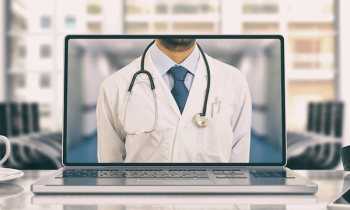
Blunders and Wonders: Overexposure to Radiation & Changing Your Microbiome
Insights to how overexposure to radiation can be reduced and how changing our microbiomes can lead to a healthier life.
Hello, I’m Dr. Nick the Incrementalist here today to talk about Blunders and Wonders
This Week’s Blunder: Excess Testing and Overexposure to Radiation
The healthcare system is working as designed — we have a system that incentivizes activity commonly known as fee for service. Compounding this is lack of interoperability that prevents information from being shared between systems and sometimes it’s not shared at all.
So, when a patient visits their doctor, he might not have access to the most recent results or tests that have been ordered, and needing this information, he orders tests to be repeated. For simple noninvasive tests, that’s an economic problem, but for anything that includes radiology imaging, especially CT scans, this creates an excess exposure to radiation that’s known to cause disease — the more exposure, more disease.
The healthcare system is working to reduce this exposure, but the excess still occurs, putting patients at unnecessary risk. Sometimes this can be ordering tests that are not clinically warranted, and this can be reduced by providing easy access to the clinical guidelines agreed through consensus by experts of the recommended testing for presenting conditions and importantly offering the ordering clinician the easy option of the safest recommended choice and the underlying reasons as to why. It extends to tracking the exposure for patients from their medical records that should be immediately available and universally shareable and should contain not just the clinical results, but a running total of radiation exposure available to everyone concerned for the care of the patient to facilitate making the right choices when ordering additional tests.
Making the data available is the first step in delivering safer, more economic care, and should be a basic requirement of any system being used, and a requirement on the part of patients.
This Week’s Wonder: Treating Diseases by Changing Your Microbiome
Since science managed to sequence the human DNA, the techniques have allowed for both faster and cheaper sequencing to take place, and we have been on this fast path to new insights into our bodies. In the case of our gut, and the microbiome our human cells are outnumbered 10 to 1 by bacteria. Early results have revealed some signatures in individuals with disease in the make-up of their gut bacteria, and there are a slew of companies jumping into that space who see the potential for using that information to not only diagnose disease, but beyond. As Mr. Spock might say, ‘If a disease impacts the make-up of our microbiome, then logically, changing the microbiome might impact, or even cure the disease.’ There have been tantalizing instances of this concept in some studies published, with the most recent study by the Gothenburg scientists, who initially looked at five patients with type-2 diabetes and 10 diabetes-free control subjects, but then they went on to confirm their findings in a larger study involving 649 people. They investigated the effect of imidazole propionate on sugar metabolism and found that the molecule affected a signaling pathway previously linked to metabolic-related diseases by directly activating a specific protein, p38gamma.
These findings provide answers to the question about the nature of the underlying mechanisms of how the gut microbiome is linked to obesity, diabetes and cardiovascular disease. As the researchers highlighted, these new insights pave the way for identification of bacteria-induced mechanisms and will allow the stratification of patient populations and identifying new, more personalized forms of treatment, that will likely include some manipulation of the microbiome as part of disease treatment.
Until next time, I’m Dr. Nick, the Incrementalist — don’t let perfection stand in the way of progress
Get the best executive insights directly to your inbox. Sign up for our
More Blunders and Wonders of the Digital Transformation:

















































